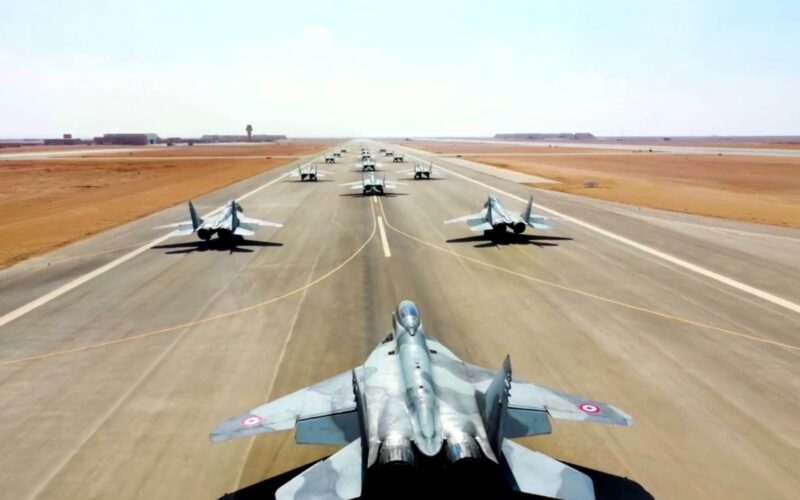Africa is home to some of the world’s longest-running conflicts. For many countries on the continent, having a military force is paramount.
But which country is the dominant force in the air? Let’s take a look at the numbers.
Not surprisingly, the actual size and state of any military is difficult to discern. Some facts and figures are purposefully kept secret or obscured, and some are hard to find because of the military’s reluctance to share new information. But here at AeroTime we ascertained the most up-to-date data by compiling different sources and comparing them with information available on the news, the air forces’ social media accounts, and other official channels.
In order to determine the size of the air forces we used the World Directory of Military Aircraft, cross-referenced with the FlightGlobal 2021 World Air Forces catalogue, and checked against the latest developments which have appeared in the news and public announcements. For the air bases, the Scramble.nl database was used, with the aforementioned cross-referencing.
So, what did we find?
In the following chart, 15 of Africa’s largest air forces are compared by their size. While size alone doesn’t mean everything, it is vitally important and the most quantifiable data we can use.
To arrive at the total number of aircraft, we counted airplanes and helicopters belonging to an air force. However, this does not include drones as numbers on those are rather murky. In addition, many drones are operated by other branches of the military.
For combat aircraft, we included any aircraft designed to carry weapons. This includes fighters, bombers and ground attack craft, as well as attack helicopters. Of course, many transport aircraft can carry rockets, guns and bombs but they are not designed for combat, and do not belong to the category of combat aircraft.
And so we find that Egypt has the largest, and arguably the most powerful, air force in Africa. With more than 1,000 aircraft, and nearly half of them combat ones, the country is a formidable force in the air. Only the Algerian Air Force comes close.
Also notable are the air forces of Sudan, Nigeria, and Libya. They all have a high percentage of combat aircraft in their fleets, prioritizing combat capability over other aspects, like transport.
Again, though, quantity does not necessarily translate into superiority. Metrics like combat readiness and morale are more important, but they are difficult to measure reliably.
However, the quality of an air force’s aircraft can be measured, albeit in a rather simplified way. The following chart takes into account the fighter fleets of African nations, and breaks them down by the generation. Only ‘pure’ fighter jets are considered here. Light combat aircraft such as the Dassault Alphajet and strike aircraft including the Sukhoi Su-22 and Su-24, while sometimes considered as fighter-bombers and certainly capable of limited air-to-air action, are excluded.
Granted, fighter jet generations are more of a marketing trick than anything else, but they are the only way to compare vastly different aircraft.
So, what do we see? While extremely large, Egypt’s Air Force consists primarily of fourth-generation F-16 and MiG-29 fighter jets, with only a small number of advanced Rafales and Su-35s constituting the cream of the crop.
Algeria, however, has invested heavily in advanced 4.5 generation jets, flying – and continuing to purchase – Su-30s. Angola has some of them too. South Africa’s fighter jet fleet can be considered the most advanced as a whole, consisting entirely of Saab JAS 39 Gripens.
But as the abundance of gray color in the chart indicates, most African air forces still rely on pre-fourth-generation aircraft: MiG-23s, MiG-21s, Mirage F1s and Northrop F-5s rule the continent, many of them dating back as far as the early 1960s.
This is where the problem of combat readiness really comes in. In most cases, it is near-impossible to judge the airworthiness of these old jets. Although some of them may occasionally fly in parades, there is little doubt that while some are still considered ‘active’, many have been cannibalized for parts or simply gather dust in the corner of a hangar.
Our conclusion? It is possible to crunch the numbers but we may never have a complete picture.

